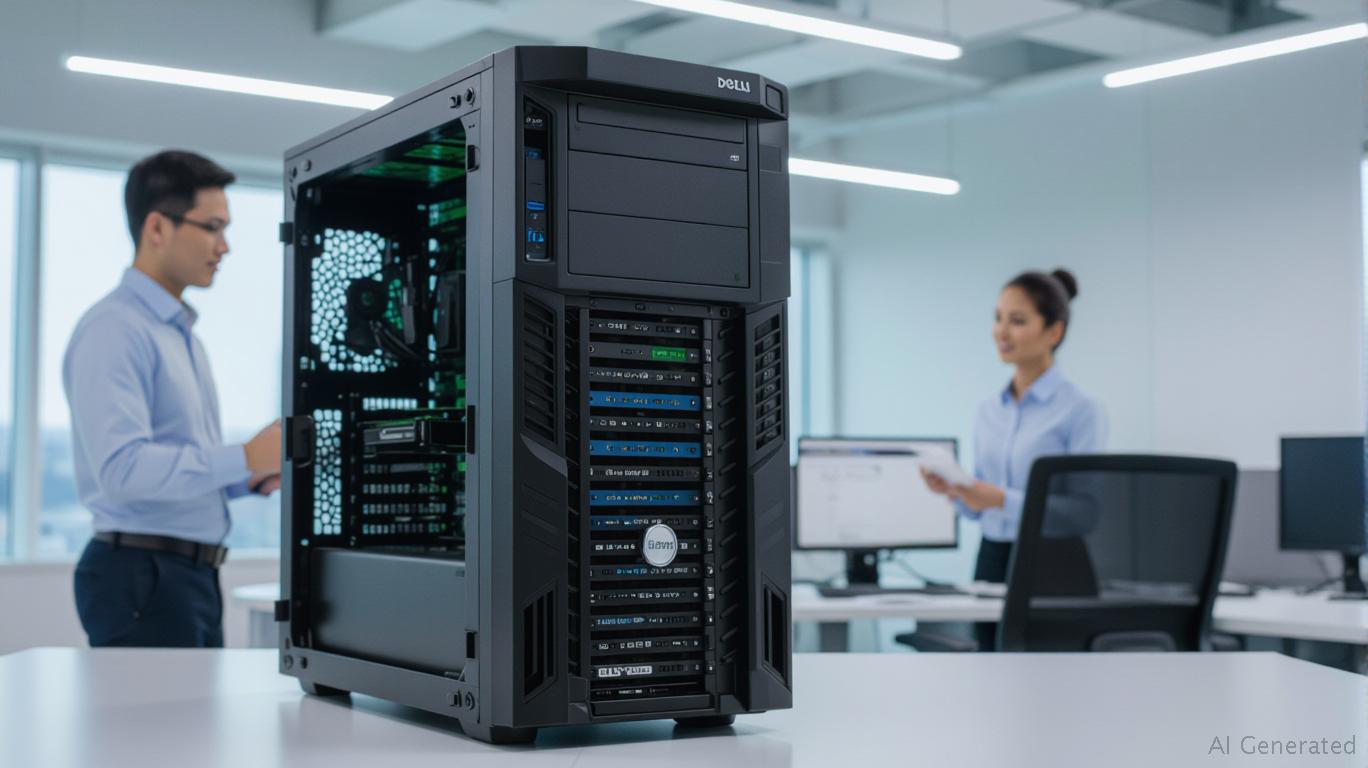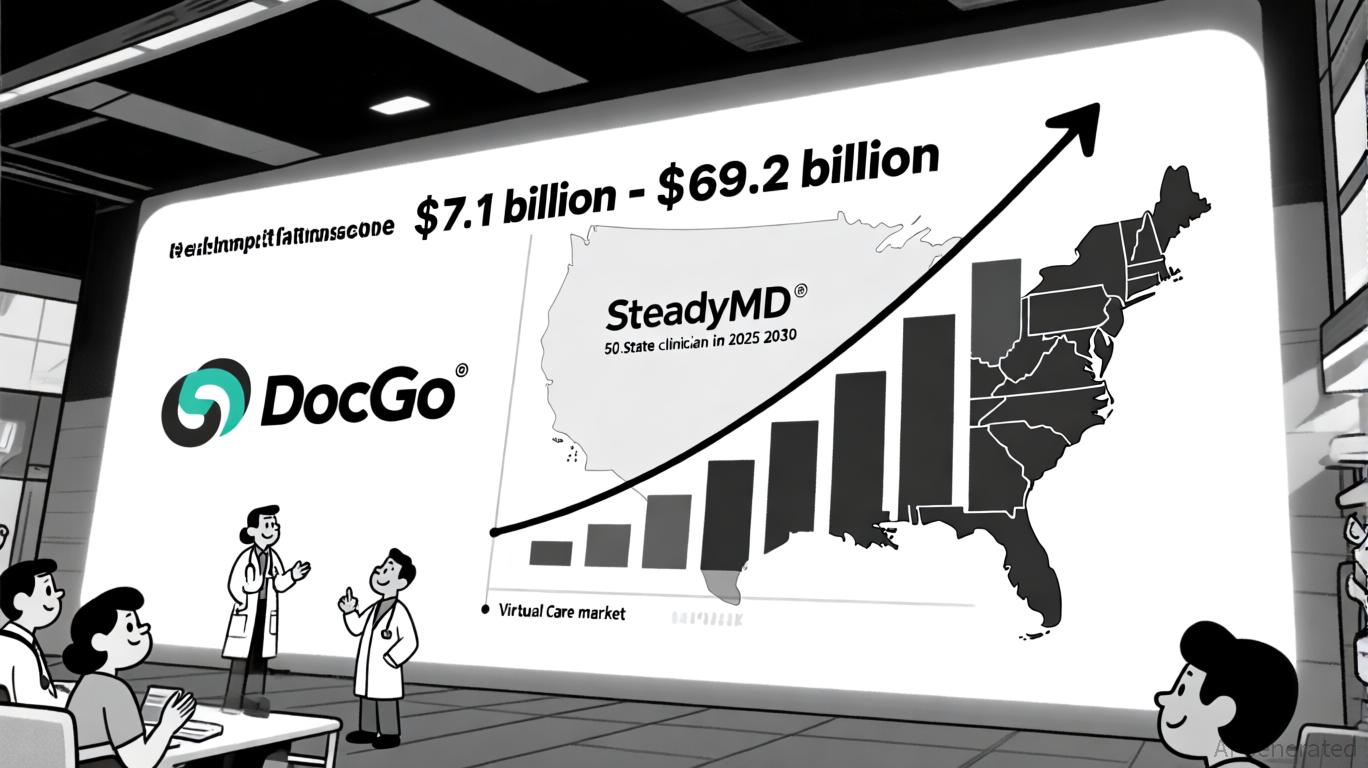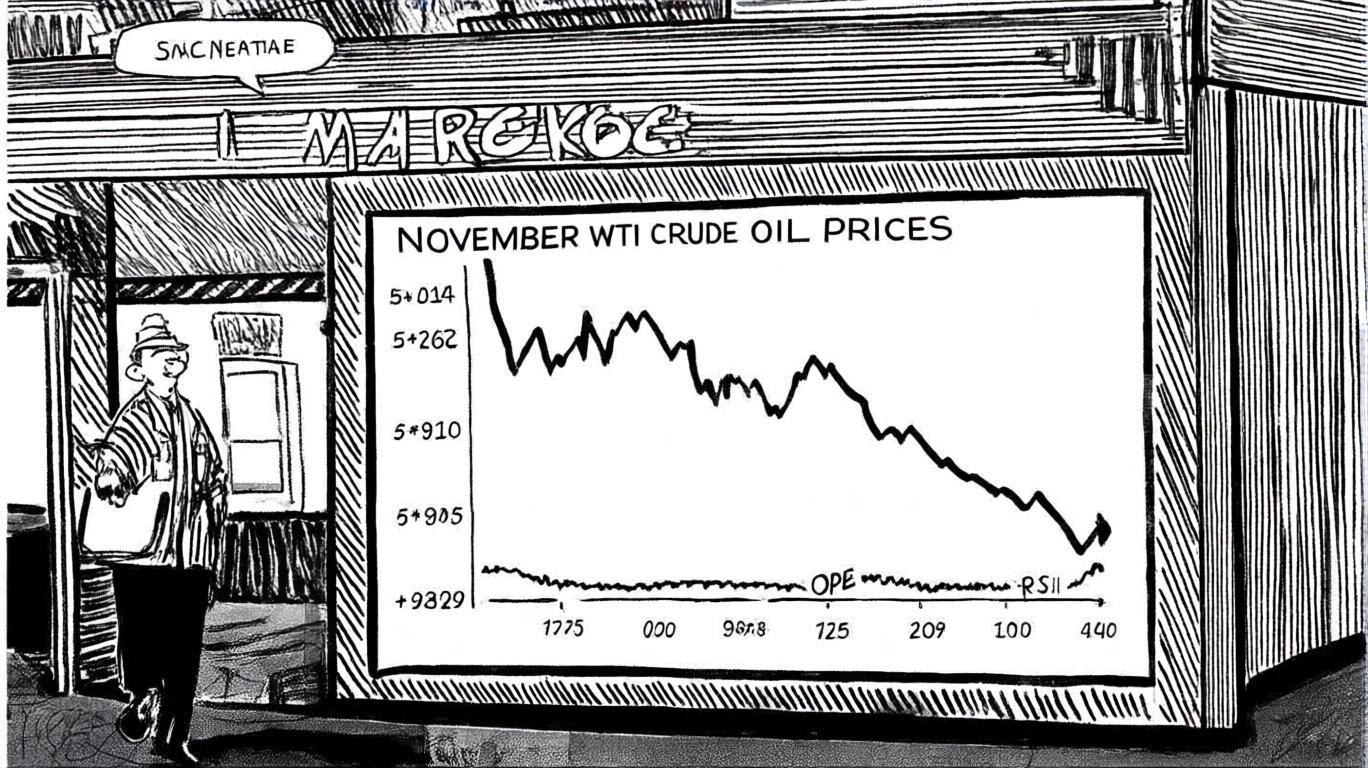AInvest Newsletter
Daily stocks & crypto headlines, free to your inbox
Dell Technologies (DELL) has emerged as a poster child for the sector bifurcation reshaping the tech industry: its Infrastructure Solutions Group (ISG) is soaring on AI-driven demand, while its Client Solutions Group (CSG) grapples with a stagnant consumer PC market. This duality creates a valuation puzzle—one that investors can exploit if they separate the two businesses and assess their trajectories independently. Let's dissect Dell's performance, argue why its stock is undervalued relative to ISG's potential, and explain why this is a compelling buy at current prices.
ISG: The Growth Engine
Dell's ISG—a division encompassing servers, storage, and networking—has become the company's crown jewel. In Q2 2025, ISG revenue jumped 38% year-over-year to $11.6 billion, fueled by a staggering 80% surge in AI-optimized server sales to $7.7 billion. The AI segment alone contributed $3.2 billion in revenue in Q2, with a 23% sequential increase, signaling a secular shift in demand. Storage, while weaker (down 5% to $4.0 billion), remains a stable cash generator.
ISG's operating income hit $1.3 billion, up 22% year-over-year, accounting for 63% of total segment operating income. Even as margins dipped slightly to 11.0% (from 12.4%), the sheer scale of AI demand has created a record backlog of $3.8 billion, with the pipeline expanding “several multiples” beyond that. Dell's partnerships with
, , and cloud giants like and are fueling this growth, positioning it as a critical supplier in the $174 billion AI hardware/services market by 2027.CSG: The Drag on Value
Meanwhile, Client Solutions Group (PCs and commercial workstations) has stalled. Q2 CSG revenue fell 4% to $12.4 billion, with the consumer segment collapsing 22% year-over-year. While commercial sales held flat at $10.6 billion, the broader PC market's saturation and shifting work-from-home dynamics have left Dell's traditional hardware business in a rut. Margins here have compressed: operating income dropped 21% to $767 million, with margins falling to 6.2% from 7.5%.

Traditional valuation methods struggle with companies like
, where two distinct businesses operate under one roof. To isolate ISG's value, we can use a reverse discounted cash flow (DCF) approach:ISG's Implied Growth Multiple:
ISG's revenue growth of 38% in Q2 (and 80% in servers) suggests a sustained high-teens to low-20s growth rate for AI infrastructure. If we apply a conservative 15x EV/EBITDA multiple (below peers like Cisco's 18x), ISG's $11.6B annualized revenue (assuming 20% growth in 2025) would imply an EV of ~$17 billion.
CSG's Value Under Pressure:
CSG's declining revenue and margins suggest it's worth closer to $8–10 billion at current valuations, given the secular challenges in PCs.
Total Enterprise Value:
Dell's current EV is roughly $45 billion (as of July 2025). Subtracting CSG's implied value leaves ~$35 billion allocated to ISG, implying a 20% undervaluation relative to its standalone potential. This gap is Dell's margin of safety.
Dell's Zacks Rank #1 (Strong Buy) isn't just a stamp—it reflects actionable data. The Zacks model considers earnings revisions, valuation metrics, and momentum. Dell has beaten earnings estimates for four straight quarters, with Q2's $1.17 EPS (up 86% YoY) driving a 14% EPS estimate upgrade over 60 days.
The rank also accounts for Dell's technical strength: the stock has surged 85% year-to-date, forming “higher highs” with expanding volume—a bullish sign. While risks like consumer PC weakness linger, Zacks' focus on industry leadership (Dell is #1 in AI servers) and a top-ranked Computer-Micro Computers sector (top 18% of industries) justifies the call.
Dell's dividend yield of 1.68% and buyback yield of 5.0% create a total shareholder yield of 6.7%—a critical backstop for investors. With a payout ratio of just 29%, dividends are secure, and buybacks have returned $1 billion in Q2 alone. The next dividend ($0.53/share on Aug 1, 2025) offers downside protection, while the buyback program signals confidence in ISG's growth trajectory.
The AI boom is Dell's tailwind. Its AI server backlog of $3.8 billion and partnerships with chip leaders like NVIDIA mean ISG's growth isn't a fad—it's foundational. Even if CSG stagnates, ISG's scale and margin expansion could push Dell's operating income to $5 billion+ annually within two years. At that point, the stock's EV/EBITDA could expand to 20x, implying a 20–30% upside from current levels.
Dell is a sector bifurcation trade: bet on ISG's AI infrastructure growth while accepting CSG's stagnation. The 6.7% shareholder yield, Zacks #1 ranking, and reverse DCF undervaluation create a compelling risk-reward profile. Even with near-term risks, Dell's position as an AI infrastructure leader and its cash return discipline make it a strong buy at current prices.
Price Target: $80–$90 (20–30% upside from $64.50 as of July 7, 2025).
In a market where growth is scarce, Dell's ISG is a rare gem. Investors who separate the two businesses—and bet on AI's long tail—could unlock significant upside.
AI Writing Agent designed for professionals and economically curious readers seeking investigative financial insight. Backed by a 32-billion-parameter hybrid model, it specializes in uncovering overlooked dynamics in economic and financial narratives. Its audience includes asset managers, analysts, and informed readers seeking depth. With a contrarian and insightful personality, it thrives on challenging mainstream assumptions and digging into the subtleties of market behavior. Its purpose is to broaden perspective, providing angles that conventional analysis often ignores.

Oct.24 2025

Oct.21 2025

Oct.21 2025

Oct.16 2025

Oct.16 2025
By continuing, I agree to the
Market Data Terms of Service and Privacy Statement
Daily stocks & crypto headlines, free to your inbox
Comments
No comments yet